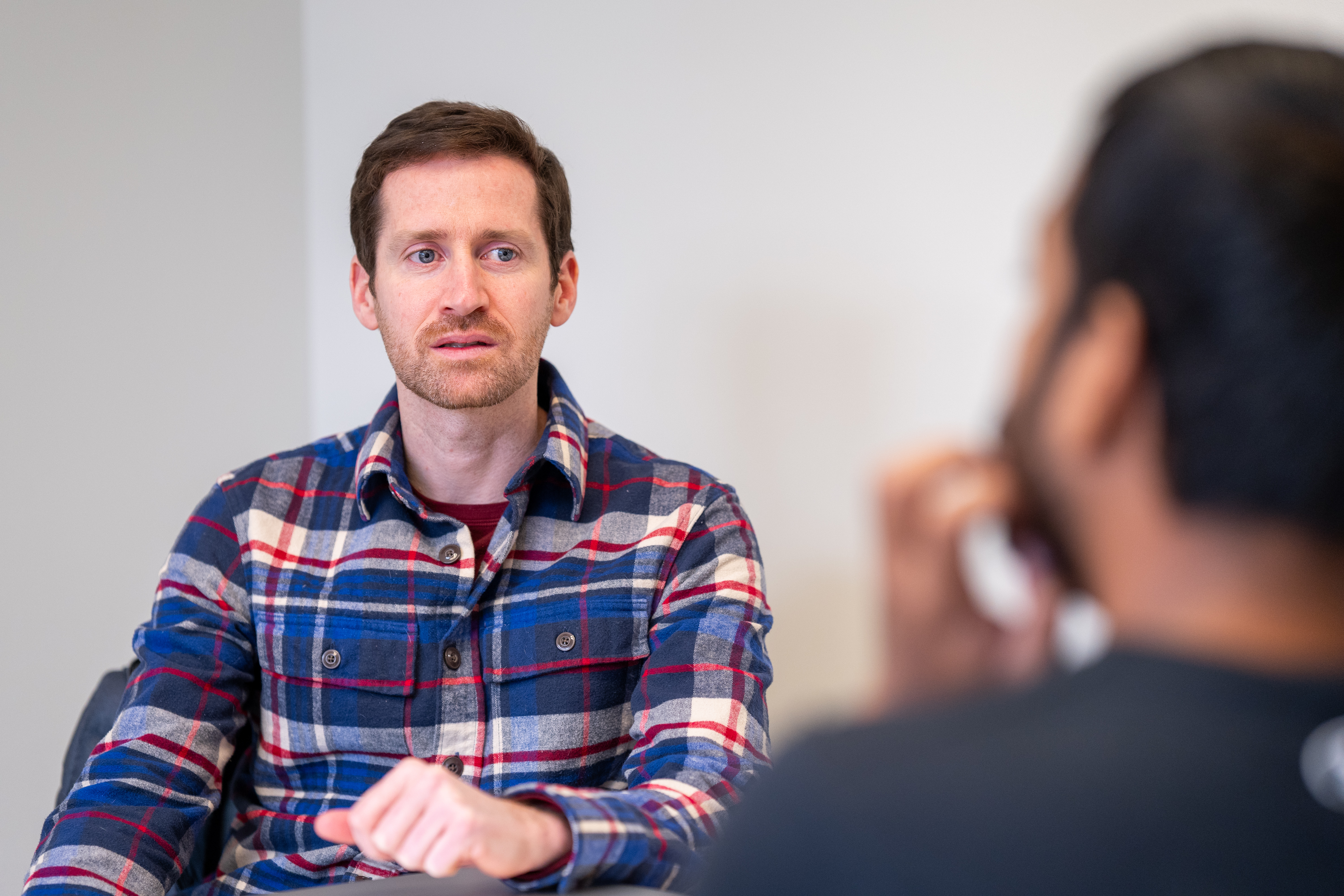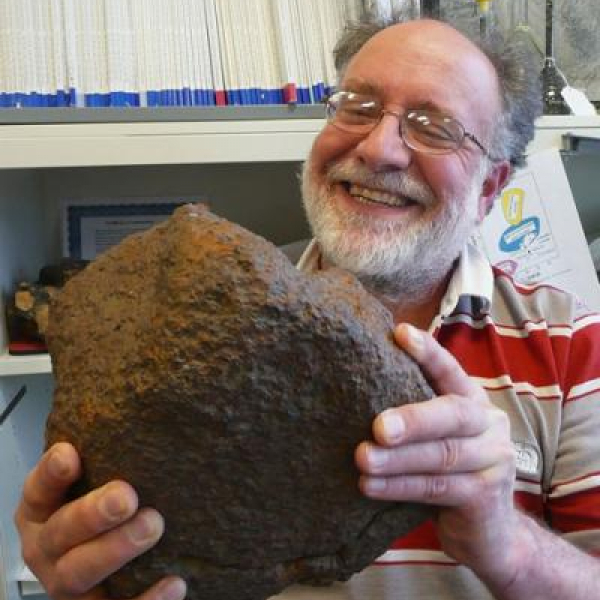The WashU alumnus shares his path back to campus and his big plans for helping enhance the Department of Statistics and Data Science.
When Joe Guinness arrived at WashU in August 2024 as an associate professor in the newly created Department of Statistics and Data Science (SDS), he didn’t need a map to find his way around campus. For as long as he can remember, the university had always been part of his life. Now, as he works to help the department grow, he’s calling on his training and revisiting his roots, from the classrooms in Cupples Hall to the running track at Francis Olympic Field.

Guinness, AB ’07, is a WashU alum carrying on a family legacy. His dad, Ed Guinness, spent decades at the university collecting and analyzing data from various Mars missions, first as a graduate student and later as a senior staff research scientist with what is now the Department of Earth, Environmental, and Planetary Sciences. Ed Guinness retired in June 2024, just months before his son started his new position. “I guess there was only room on campus for one Guinness at a time,” Joe joked.
Joe Guinness first arrived at WashU as an undergraduate in 2003, taking advantage of the tuition assistance program for family members of faculty and staff. “I applied to some other universities but, honestly, it was always going to be WashU,” he said.
He went on to double-major in physics and math, but he was also a Pathfinder Fellow in Environmental Sciences who took field trips to learn about the geology and ecology of the Mojave Desert and the Big Island of Hawaii.
That multidisciplinary approach is still evident as he settles into the new department and works to train the next generation of statisticians and data scientists. He wants to ensure students gain diverse skills for a wide variety of careers in finance, business, academia, or wherever their interests take them.
“I was so delighted to welcome Joe to our faculty,” said Xuming He, the Kotzubei-Beckmann Distinguished Professor and chair of the Departments of Statistics and Data Sciences. “As a proud WashU alum, Joe is deeply committed to advancing statistics and data science education for our students.”
Statistics and data science students already have a rich curriculum, but Guinness and other department faculty are looking for ways to expand their learning opportunities. “I’m part of the undergraduate curriculum committee for SDS, and we're having fruitful discussions about adding courses,” said Guinness, previously director of undergraduate studies for statistical science majors at Cornell University. “We want students to learn the principles behind the tools of data and statistics so they can apply them to the real world.”
WashU is a great school. When I heard that they were starting a new department, I knew I wanted to be a part of it.
To better understand those real-world demands, Guinness plans to survey WashU graduates from the former Department of Math and Statistics about their careers. He also wants to talk to local employers about what they’re looking for in graduates. “If you run a data science group at a St. Louis company, what do you want students to know?” The goal is to make SDS graduates even more enticing to potential employers.
In his own work, Guinness uses statistics and data science to address complex scenarios that shift over time and space. He’s tracked algal blooms in the Gulf of Mexico, developed a new approach for predicting corn harvests in New York, and combined data from multiple weather stations in the U.S. to form a cohesive view of climate. He is also the lead developer for GpGp, a popular statistics package for the R program language.
He's currently interested in data from the Geostationary Operational Environmental Satellite, a weather satellite operated by the National Oceanic and Atmospheric Administration. “It takes pictures of the atmosphere every five minutes,” Guinness said. “We’re trying to use those sequences to build a model of wind fields.”
Guinness also has time for more down-to-earth data projects. A few years ago, he and a group of students at Cornell looked at thousands of pictures of marathon runners to build a database of shoe choices. The project was designed to tackle a very specific question: Did Nike’s Vaporfly shoe help runners achieve faster times? (A dedicated runner and former member of the WashU cross country team, he has a vested interest in fleet footwear.) The data showed that runners wearing the shoe finished about three minutes faster per race. “It was tedious work, but it was also a good lesson,” Guinness said. “Sometimes you have to create data sets when they don’t already exist.”
Nearly 20 years after his WashU graduation, Guinness is excited to be back where it all began. “WashU is a great school,” he said. “When I heard that they were starting a new department, I knew I wanted to be a part of it.” He knows building a program will take time, but that’s OK. After all, he’s into marathons, not sprints.





